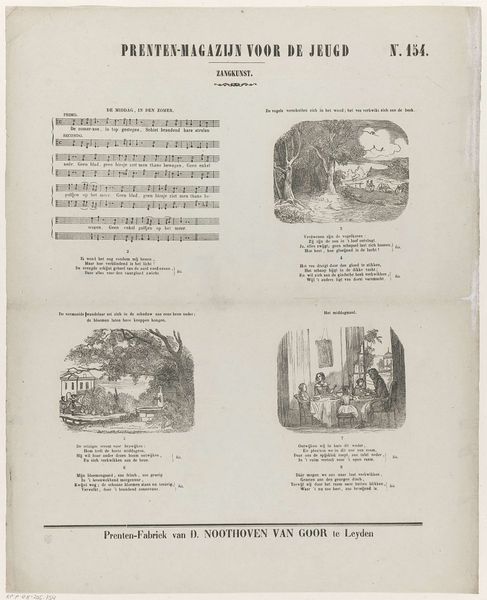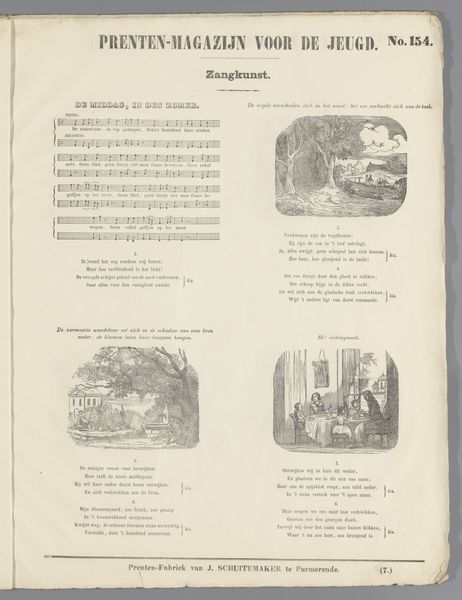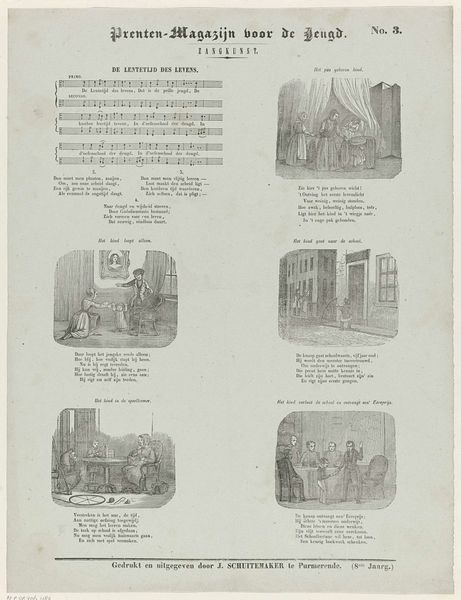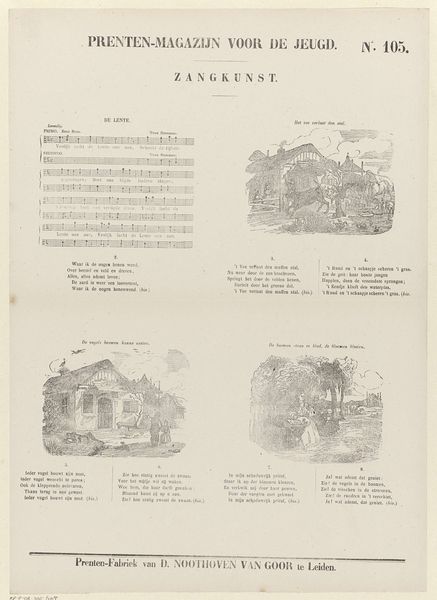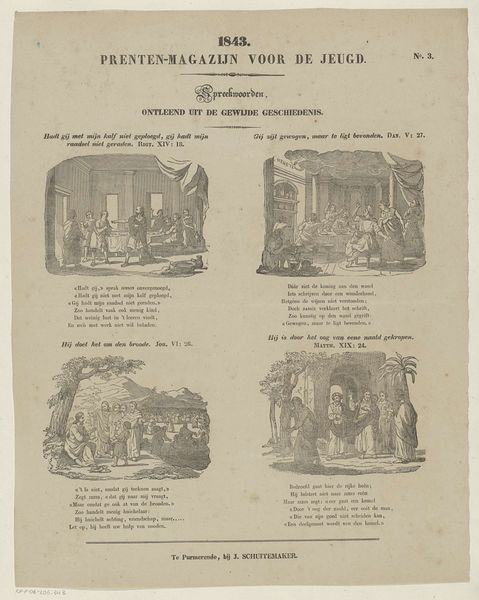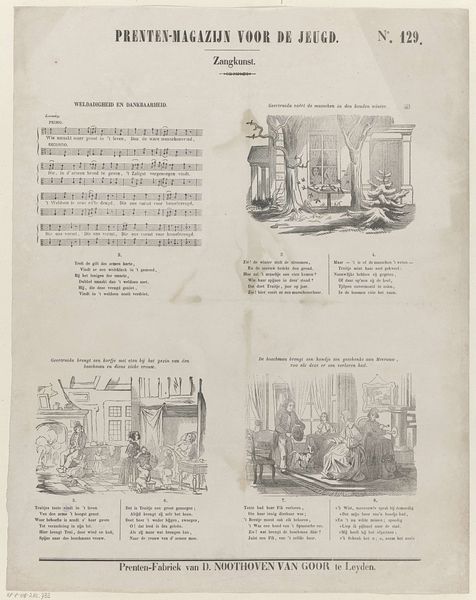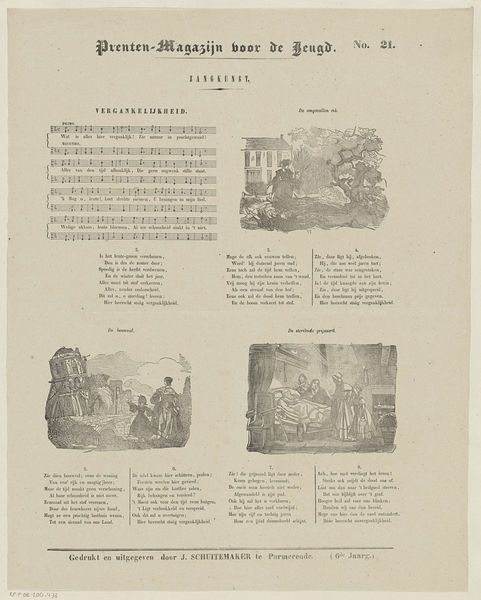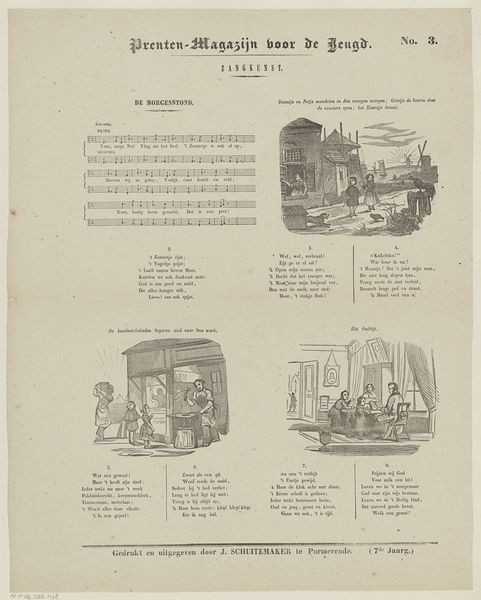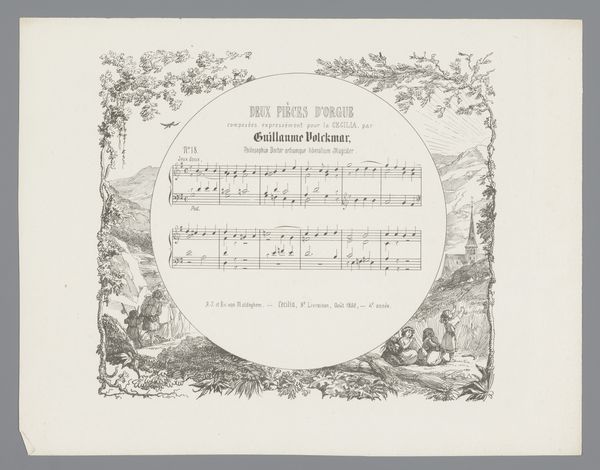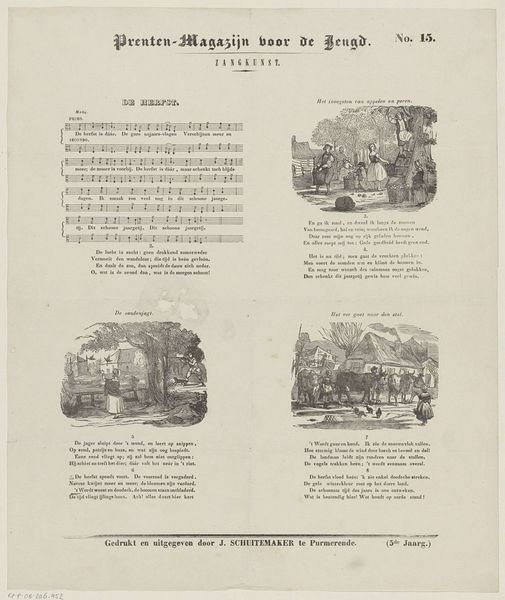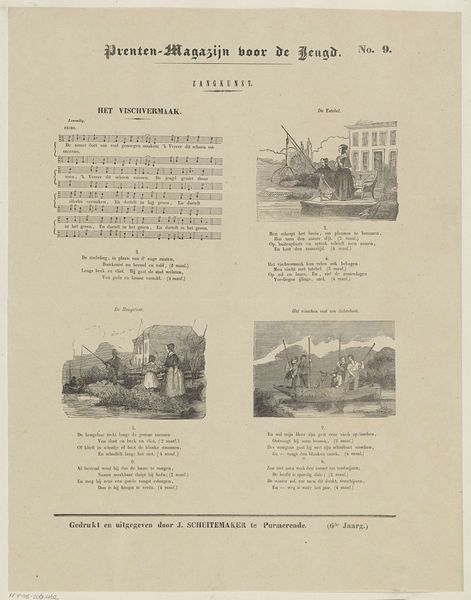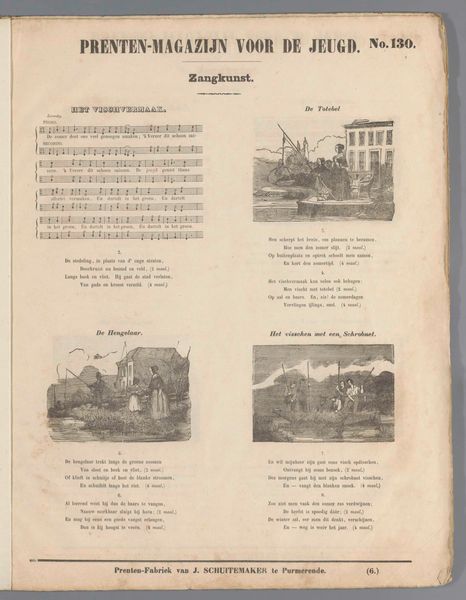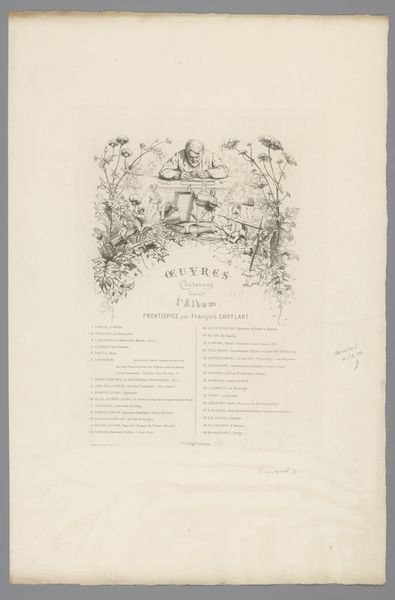
print, textile, paper, engraving
# print
#
old engraving style
#
landscape
#
textile
#
paper
#
romanticism
#
cityscape
#
genre-painting
#
engraving
Dimensions: height 427 mm, width 334 mm
Copyright: Rijks Museum: Open Domain
Curator: This print is titled "Zomermiddag," created in 1848 by Jan Schuitemaker. It seems to be an engraving, printed on paper and possibly also textile. A relatively common process in those days. Editor: It gives me an immediate feeling of domestic tranquility and perhaps a longing for simpler times. There’s an interesting juxtaposition of public and private spaces. Curator: Schuitemaker was both the engraver and the publisher, which gives him unusual control over the entire production process. Note the magazine format with text accompanying each of the images. The materials themselves—the paper, the ink, the printing press—tell a story of mid-19th-century production. Editor: Yes, and each little vignette hints at a larger narrative about 19th-century Dutch life. There’s a landscape scene, an outdoor gathering, an indoor scene of family, a stage play. What kinds of social scripts were being reinforced, or perhaps subtly challenged, in these images designed for the "Youth Magazine"? Curator: Perhaps Schuitemaker chose engraving because the prints could be reproduced relatively easily. He created them with what was available at the time, and for its intended popular consumption, an important aspect for prints, textiles or books in that period. Editor: It makes me think about access to art, or "Zangskunst," as the headline calls it, back then. Was this aimed at a particular social class, a rising middle class perhaps? Who had access to printed materials and education to interpret both the visual and written information? It clearly suggests an emphasis on artistic edification as a marker of social mobility. Curator: Indeed. It points to how reproductive technologies allowed certain stories and imageries to circulate widely. These vignettes speak about an interest in leisure and family values. Editor: Precisely. Looking closer, one can speculate on what’s going on with the family inside—reading, crafting, sharing time together. Also the play is evocative of a shared cultural understanding and public gathering in that period. It's interesting to see how they framed themselves as individuals, within their society and also perhaps consider their place and rank inside it. Curator: Looking at “Zomermiddag”, it makes me wonder how our contemporary means of distribution impact the status of images today. In essence, what have we gained and lost through technological evolution? Editor: Yes, and understanding this artwork's original context provides vital insight for addressing modern-day dialogues. Thanks for drawing my attention to the way materials themselves shaped meaning back then.
Comments
No comments
Be the first to comment and join the conversation on the ultimate creative platform.
